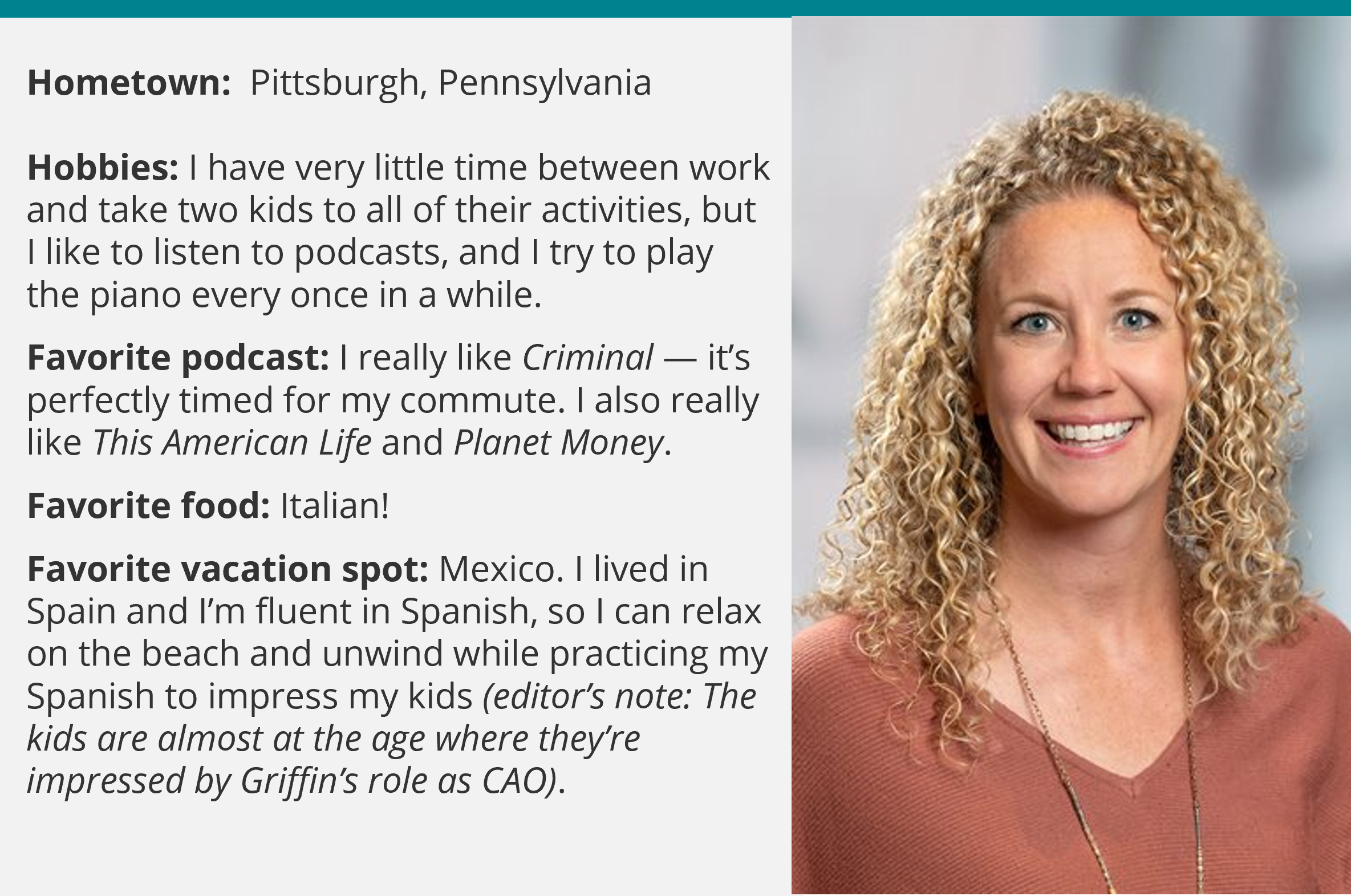Chase’s Consumer Banking Chief Administrative Officer shares the most rewarding aspects of her 20 year career at the firm and why it’s all in the details.
How long have you been with JPMorgan Chase and what has your path here been?
I celebrated 20 years this past July. I started in July 2003 with Bank One in what today would be called the Chase Leadership Development Program, but back then it was called the Operating Management Development Program. Through that, I had the opportunity to navigate different Operations teams in the firm for six months, and then received my final placement in the business.
I spent a good amount of time in Operations and a short stint in Recruiting. After that, I went to work in what would today be called Digital, but back then we didn’t have a mobile app, so it was the Corporate Internet Group supporting chase.com.
Then I spent a really big chunk of my career in Risk Management — about 10 years, so half of my time here. I ultimately became the Chief Risk Officer for Consumer Banking, which is the role I had prior to becoming the Chief Administrative Officer (CAO) for Consumer, which is what I’ve been doing for the last two years.
What does the job as Chief Administrative Officer for Consumer Banking entail?
It’s a lot of things! Primarily, I like to say it’s all of the details about the branches, except the humans. The people in the branches report to peers of mine. We’re the team that builds, closes and renovates the branches. We also do a lot of work related to what’s happening inside — the policies, procedures and tools, including the ATMs. We really focus on the way Chase shows up through our physical footprint in the communities we serve.
I’m very proud to say that there are more than 4,700 branches across the lower 48 states. And actually for ATMs, we’re in 49 states because we have one in Hawaii. Of course everyone wants to go work there, but it’s just one ATM!
What’s the most rewarding aspect of your role?
Seeing all of the work come to life is super exciting. Just having the opportunity to go to an opening where I know what went into the process is amazing. From deciding that we’re going to go into that market, to people literally walking the streets to find the best street corner, to then figuring out how we actually acquire the real estate on that street corner, to then designing these beautiful spaces — it all comes to life in that one physical space. So being at the branch opening with the team that’s going to work in this beautiful new workspace to serve our customers makes it all come together in a really meaningful way.
Branches are one of the most concrete examples of the Chase brand (pardon the pun). What goes into deciding where the branches are located and designed?
It’s one of those things that takes a literal village. There is a team behind the broad strategy of where we want to go and once that decision is made, it’s handed off to us for execution. That’s when my team starts scouting out parts of the town where we want to be. We’re really deliberate about looking at where people are going for ‘everyday needs’ — where they’re going to the supermarket, to get a bite to eat and so on — and making sure we’re in that proximity and that we have a valuable street corner.
And then obviously thinking about interior design, which is really fun. We’ve been experimenting with companies that help us think about how people want to interact with the modern retailer, because it’s not the same old style. You used to walk into a bank branch and see 15 teller windows, and that’s what you did, you went to transact. That’s not the case anymore because you can transact on your own on your mobile device. So while we still have that capability, you’ll notice that in a newer branch, tellers are actually around the bend a little bit, and you enter into a living room space with couches. You’re greeted by somebody with a tablet who can direct you to one of our varying workstations depending on what you need. We’ve thought about how customer behaviors have evolved and tried to evolve the inside of the space to meet those changes.
Depending on which of the branches you go into, you’re going to see different things. Our approach has changed from transactional activities to advisory activities to best meet our customers’ needs.
JPMorgan Chase Chairman and CEO Jamie Dimon has emphasized the value of a physical space in this digital era — why do you think that’s so important?
We are very data driven when it comes to why we’re doing what we’re doing. The data shows us that our ability to gather market share, gather customers and have satisfied customers highly correlates to our physical presence. Even if customers are coming in less frequently, the security blanket, if you will, of knowing that we’re there and that we’re going to be there, is increasingly important.
What defines you as a leader?
I feel like I’m very approachable. I think I try to be very thoughtful, deliberate and fair. I grew up here, and so I’ve had the chance to work for a lot of different leaders. I try to emulate the good things that I like in the best leaders and learn from the things that I didn’t particularly like in others.
We work very hard, and we have a massive remit, but at the same time we don’t take ourselves too seriously. I really emphasize teamwork because none of this happens in isolation. It’s about making sure that people have the right kind of balance so they can do the really hard work while also having the flexibility they need. I’m a working mom, so it’s something that’s been really important to me throughout the years.
We know that women face different challenges in the workforce than men do. What are your biggest tips for overcoming those challenges?
I think number one is to be confident. The other is to be in control. I have a very busy schedule, but I decide what I’m doing. I decide if I need to take the trip and be somewhere in person or not. In my 20 years of being at JPMC, I have never had someone decide that for me, and I think the element of those choices being my decision versus someone else’s makes them feel less stressful and overwhelming.



